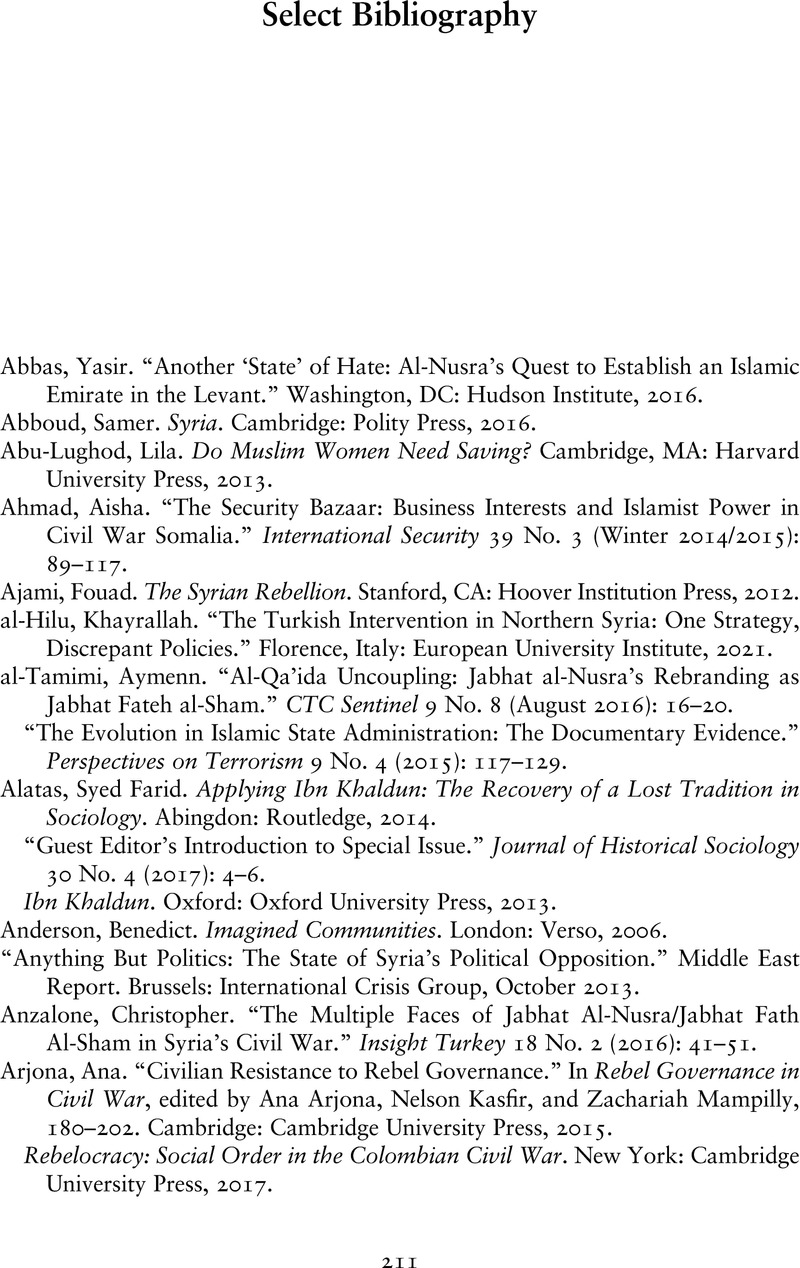Book contents
- Good Rebel Governance
- Good Rebel Governance
- Copyright page
- Contents
- Figures
- Acknowledgments
- 1 Introduction
- 2 The “Good Governance Bazaar”
- 3 Reconceptualizing Rebel Governing Authority
- 4 Studying Syria “from the Verandah”
- 5 Raqqa’s Caliphal Social Contract
- 6 Saraqeb’s “Limited Access Order”
- 7 The Fervent Enclave of Darayya
- 8 Aleppo’s Republican Guild
- 9 The Syrian Interim Government as “Floating” Counter-State
- 10 Revolutionary Possibilities and International Imaginings
- Notes
- Select Bibliography
- Index
- References
Select Bibliography
Published online by Cambridge University Press: 01 June 2023
- Good Rebel Governance
- Good Rebel Governance
- Copyright page
- Contents
- Figures
- Acknowledgments
- 1 Introduction
- 2 The “Good Governance Bazaar”
- 3 Reconceptualizing Rebel Governing Authority
- 4 Studying Syria “from the Verandah”
- 5 Raqqa’s Caliphal Social Contract
- 6 Saraqeb’s “Limited Access Order”
- 7 The Fervent Enclave of Darayya
- 8 Aleppo’s Republican Guild
- 9 The Syrian Interim Government as “Floating” Counter-State
- 10 Revolutionary Possibilities and International Imaginings
- Notes
- Select Bibliography
- Index
- References
Summary

- Type
- Chapter
- Information
- Good Rebel GovernanceRevolutionary Politics and Western Intervention in Syria, pp. 211 - 224Publisher: Cambridge University PressPrint publication year: 2023

